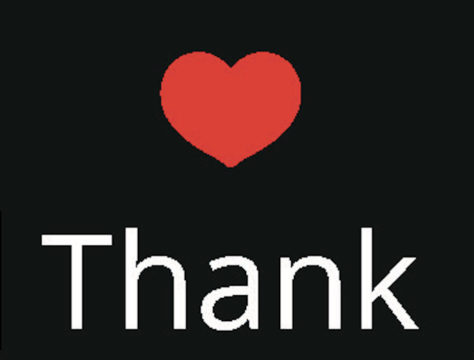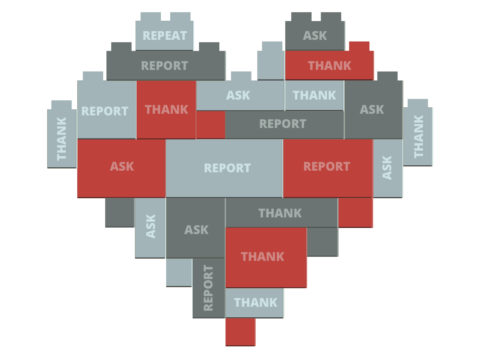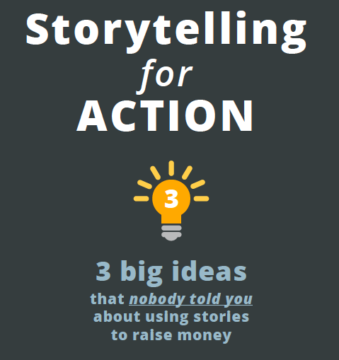Either this week or next week, my advice is to send an thank you email to your donors. That’s right, a pure thank you.
Fill it with gratitude. Thank your donor with raw emotion. Thank her for what she did (gave a gift to help), not for what your organization did. Tell her how valuable she is to your organization.
Thank Her As If You Actually Need Her
Most organizations thank their donors as if the donor is a very small part of a very big process.
You know intuitively that’s not a good idea. That’s like treating everyone you meet as ‘just one of the several thousand people you’ll meet in your life.’
Your goal is to make her FEEL your gratitude and thankfulness. Thank her as if your organization actually needed her gift last year!
Fine. What’s the Benefit?
You mean other than being honorable and polite?
Because she likely just heard from you (and a lot of other organizations) asking her to help. This is your first chance in 2018 to close the loop and show her that she matters.
Right? She’s about to receive all sorts of annual reports and other messages that say, “Look what WE did last year, look how many people WE helped last year, WE are awesome!”
I submit to you that you’ll build deeper relationships with your donors more by saying, “Thank YOU for what YOU did last year!”
How To Write It
Always remember: your headline and first sentence are really important because most people won’t read the whole thing.
But if you get your message of gratitude in your subject line, your headline, and your first sentence, your donor is almost guaranteed to get it.
Your goal is to be emotional and personal. Don’t sound corporate. Sound like one person writing to express sincere thanks to one other person.
You don’t have to overthink this. I bet the following would be very effective:
Dear [NAME],
Thank you. Thank you. Thank you. Thank you. Thank you. Thank you. Thank you. Thank you. Thank you. Thank you. Thank you. Thank you. Thank you. Thank you. Thank you. Thank you. Thank you. Thank you. Thank you. Thank you. Thank you!
Last year when your gift was needed, and you reached out in faith and generously helped. You and your gift matter, and you made a difference.
I am so incredibly grateful for you. Thank you for being a donor!
[SIGNATURE]
Try to have your email look as personal as possible – like it came straight from Outlook. If you have a fancy email template, try to use as little of it as possible. If you normally have a bunch of social or donation links at the bottom, delete them if you can. Don’t think of this as an email to your list. Think of it as an email from one grateful to one donor who is wondering if they matter.
Who To Send It To
Your donors.
Not to everybody on your email list. Just your donors. You do not want to give your non-donors one of the emotional benefits of giving (being Thanked) when they have not given a gift.
If you can’t segment out your non-donors, then send it to everybody.
When To Send It
As soon as you can!
Start your donors’ 2018 off with an incredible expression of gratitude to them! They’ll love it, your open rate will be higher than normal, you’ll feel great for doing it, and you’ll have taken a powerful first step towards fundraising success this year!








